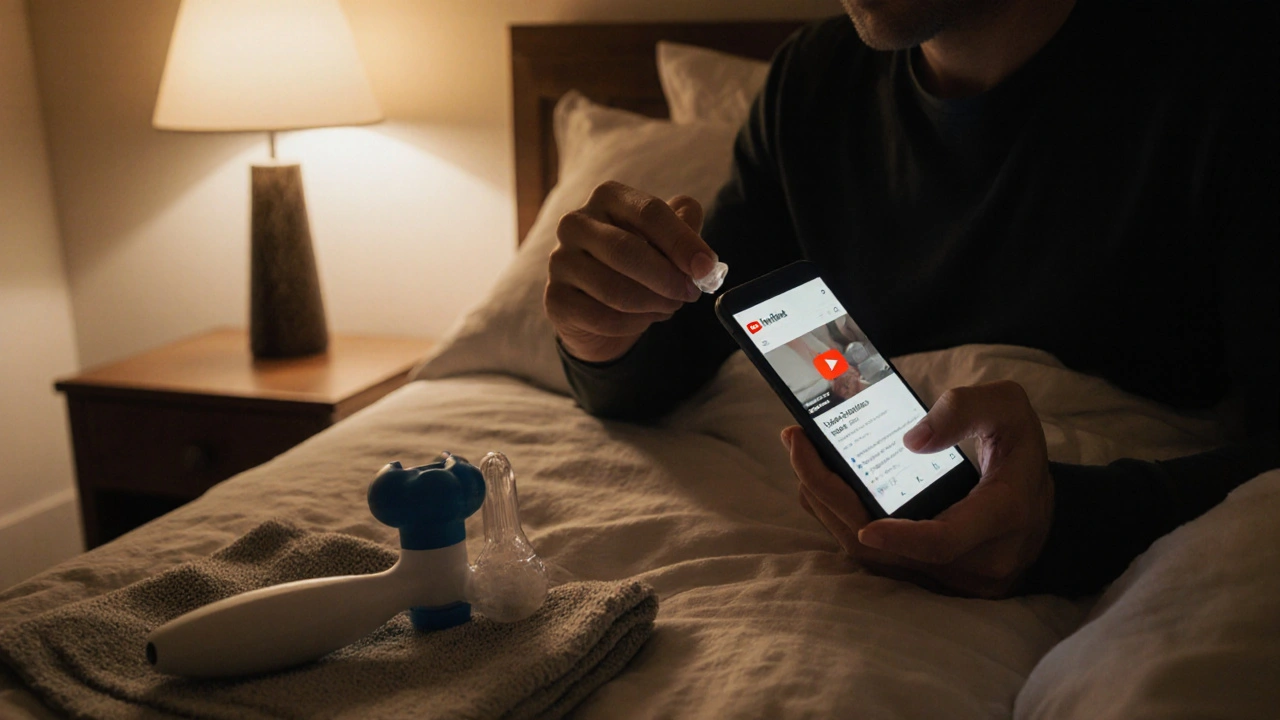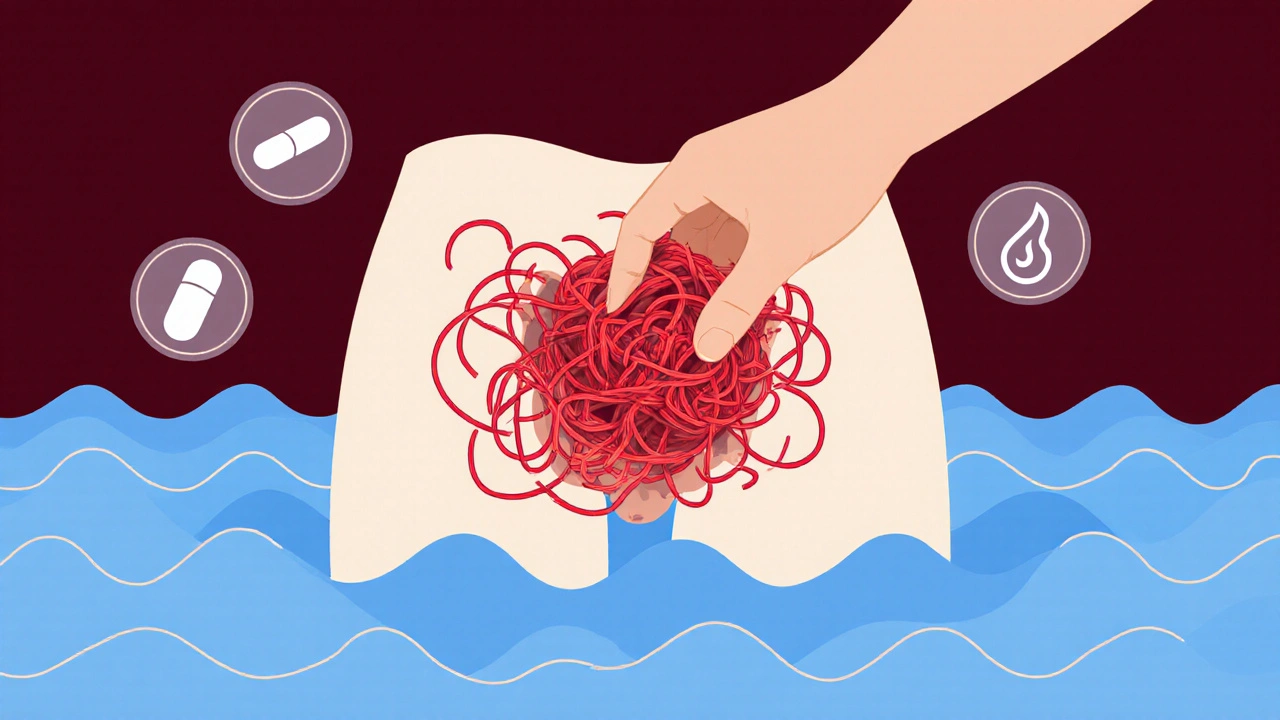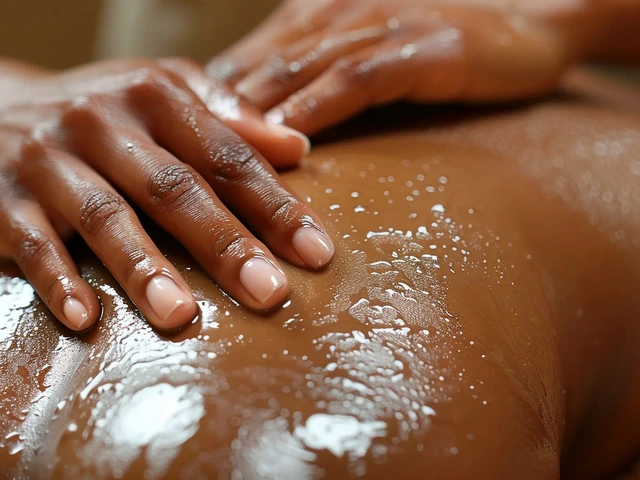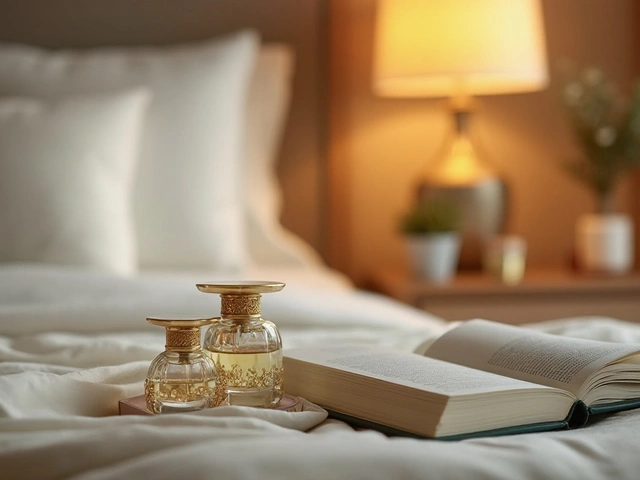Prostate Massage Safety Assessment Tool
Important Safety Information
Prostate massage is not a proven method to prevent prostatitis. Most cases of chronic pelvic pain are caused by muscle tension, not bacterial infection. Many medical professionals do not recommend it due to lack of evidence and potential risks.
Answer These Questions
Answer these questions to determine if prostate massage might be safe for you based on current medical evidence.
Your Safety Assessment
Men often hear about prostate massage as a secret weapon against prostatitis - a condition that affects about half of all men at some point in their lives. Some claim it prevents infections, eases pain, and even boosts sexual health. But what do actual medical studies say? Is it a proven therapy, or just another wellness trend with little backing?
What Is Prostate Massage, Really?
Prostate massage is the manual stimulation of the prostate gland, usually done by inserting a lubricated finger about 5 to 7 centimeters into the rectum. The prostate sits just in front of the rectum, about the size of a walnut. The goal? To drain fluid from the gland, improve blood flow, and reduce inflammation. It’s been used since the 1800s, mostly to help with chronic pelvic pain or to collect fluid samples for testing. Today, it’s not part of standard medical care in the U.S. or most of Europe. The American Urological Association doesn’t recommend it for treating or preventing prostatitis. But it’s still talked about - especially in alternative medicine circles, YouTube videos, and online forums. Some men swear by it. Others say it made things worse.Does It Actually Prevent Prostatitis?
The short answer: there’s no solid proof. Some sources, like a 2023 article from a Czech wellness site, claim prostate massage can reduce prostatitis risk by up to 30%. But here’s the problem - they don’t name the study. No journal, no authors, no data. That’s not science. That’s an assertion. A 2022 study published in a medical journal looked at 81 men with chronic prostatitis. Half got antibiotics alone. The other half got antibiotics plus prostate massage three times a week for four weeks. The results? No difference in symptom improvement. Massage didn’t add any benefit. And here’s the bigger picture: 90% of chronic prostatitis cases aren’t caused by bacteria. That’s from a 2017 study by Charles University in Prague. Most men with pelvic pain have what’s called Chronic Pelvic Pain Syndrome (CPPS) - a condition linked to muscle tension, nerve sensitivity, or inflammation, not infection. So if you’re trying to drain fluid to fight bacteria, you’re treating the wrong problem.Why Do Some Men Say It Works?
Because sometimes, it does - but not for the reasons they think. Men who report relief often describe reduced pressure, better urine flow, or even stronger orgasms. That’s not because the massage killed bacteria. It’s because the prostate is surrounded by pelvic floor muscles. When those muscles are tight or spasming, they cause pain that feels like prostatitis. Massage - whether prostate or pelvic floor - can help relax those muscles. A 2023 review from GoodRx notes that pelvic floor physical therapy helps 60-70% of men with chronic pelvic pain. That’s the real key. Massage might help as a side effect - not by draining fluid, but by releasing tension. Also, some men experience sexual pleasure from prostate stimulation. That’s normal. The prostate is a highly sensitive area. Orgasms from prostate stimulation alone are well-documented. Feeling good doesn’t mean it’s preventing disease.
When Is Prostate Massage Dangerous?
It’s not harmless. There are clear red flags. If you have fever, chills, burning urination, or sudden severe pain - you likely have acute bacterial prostatitis. Massaging the prostate in this state can spread infection into your bloodstream. That’s dangerous. If you have prostate cancer - or even suspect you might - massage is absolutely not safe. It can cause cancer cells to spread or trigger bleeding. Always get screened before trying anything invasive. Even if you’re healthy, improper technique can cause rectal tears, infections, or increased pain. Many men report discomfort after self-massage, especially if they use too much pressure or don’t use enough lubrication.What Do Experts Actually Recommend?
Mainstream urologists don’t recommend prostate massage as a treatment or prevention tool. But they do recommend other things that work:- Pelvic floor physical therapy - This is the most evidence-backed approach for chronic pelvic pain. Therapists teach you how to relax and strengthen the muscles around the pelvis.
- Anti-inflammatory diets - Reducing processed foods, alcohol, and spicy foods can lower inflammation that triggers symptoms.
- Regular movement - Sitting for long periods increases pelvic pressure. Walking, stretching, and cycling (with a proper saddle) help.
- Stress management - Anxiety and stress make pelvic pain worse. Meditation, breathing exercises, and therapy help more than you’d think.

What About the Istanbul Protocol and Other Alternative Methods?
You’ll find YouTube videos promoting Dr. Cüneyd Sevinç’s “Istanbul Protocol” - a mix of prostate massage, heat therapy, and ozone treatment. He claims success with chronic prostatitis. But there are no published studies. No peer-reviewed data. No patient numbers. Just testimonials. This is a common pattern in alternative medicine: compelling stories, no science. Ozone therapy, for example, isn’t approved by the FDA for prostate conditions. Heat therapy might feel good, but it doesn’t cure anything. If you’re considering this route, ask: Where’s the data? Who funded it? Was it published in a real medical journal? If you can’t answer those, proceed with caution.Can You Do It Yourself?
Yes - but don’t go in blind. Many men turn to self-massage after antibiotics failed. YouTube tutorials show how to position your finger, use lubrication, and apply gentle pressure. Some use prostate massagers - small devices designed for this purpose. But these aren’t regulated like medical devices. Quality varies. If you try it:- Wash your hands and trim your nails.
- Use plenty of water-based lubricant.
- Go slow. Start with 1-2 minutes, once a week.
- Stop if you feel sharp pain, bleeding, or increased discomfort.
- Never do it if you have fever, urinary retention, or a recent prostate biopsy.
What’s the Bottom Line?
Prostate massage isn’t a proven way to prevent prostatitis. The science doesn’t support it. Most cases aren’t caused by stagnant fluid - they’re caused by muscle tension, nerves, or unknown inflammation. Massaging the prostate won’t fix that. But it might help if you’re dealing with pelvic floor tightness. In that case, it’s not the massage itself that helps - it’s the relaxation of muscles. And there are better, safer ways to do that: pelvic floor therapy, yoga, walking, and breathing exercises. If you’re experiencing pelvic pain, urinary issues, or sexual discomfort, see a urologist or pelvic floor physical therapist. Don’t rely on unverified YouTube videos or anecdotal claims. The real prevention? Stay active. Manage stress. Avoid long hours of sitting. Drink water. Get screened for prostate cancer if you’re over 50. And if you want to explore prostate stimulation for pleasure - that’s fine. Just don’t confuse pleasure with prevention.Can prostate massage prevent prostate cancer?
No. There is no evidence that prostate massage prevents prostate cancer. In fact, massaging the prostate if cancer is present could potentially spread cancer cells. Regular screenings, not massage, are the only proven way to catch prostate cancer early.
Is prostate massage safe to do at home?
It can be, if done carefully. Use plenty of lubrication, keep nails short, and start gently. Stop immediately if you feel pain, bleeding, or increased symptoms. Never do it if you have fever, acute pain, or a known prostate condition without consulting a doctor first.
Why do some doctors still recommend it?
Most mainstream urologists no longer recommend it. Some alternative practitioners or older physicians may still suggest it based on outdated practices or anecdotal reports. But major medical associations like the American Urological Association do not endorse it due to lack of evidence.
Does prostate massage improve sexual function?
Some men report stronger orgasms or increased sensitivity after prostate stimulation. This is likely due to the high concentration of nerve endings in the prostate, not because it treats a medical condition. It’s a sexual experience, not a medical treatment.
What’s the best way to prevent prostatitis?
Stay hydrated, avoid prolonged sitting, manage stress, and get regular physical activity. If you have chronic pelvic pain, pelvic floor physical therapy is the most effective treatment. Antibiotics only help if there’s a bacterial infection - which is rare. Most cases are not caused by germs.






